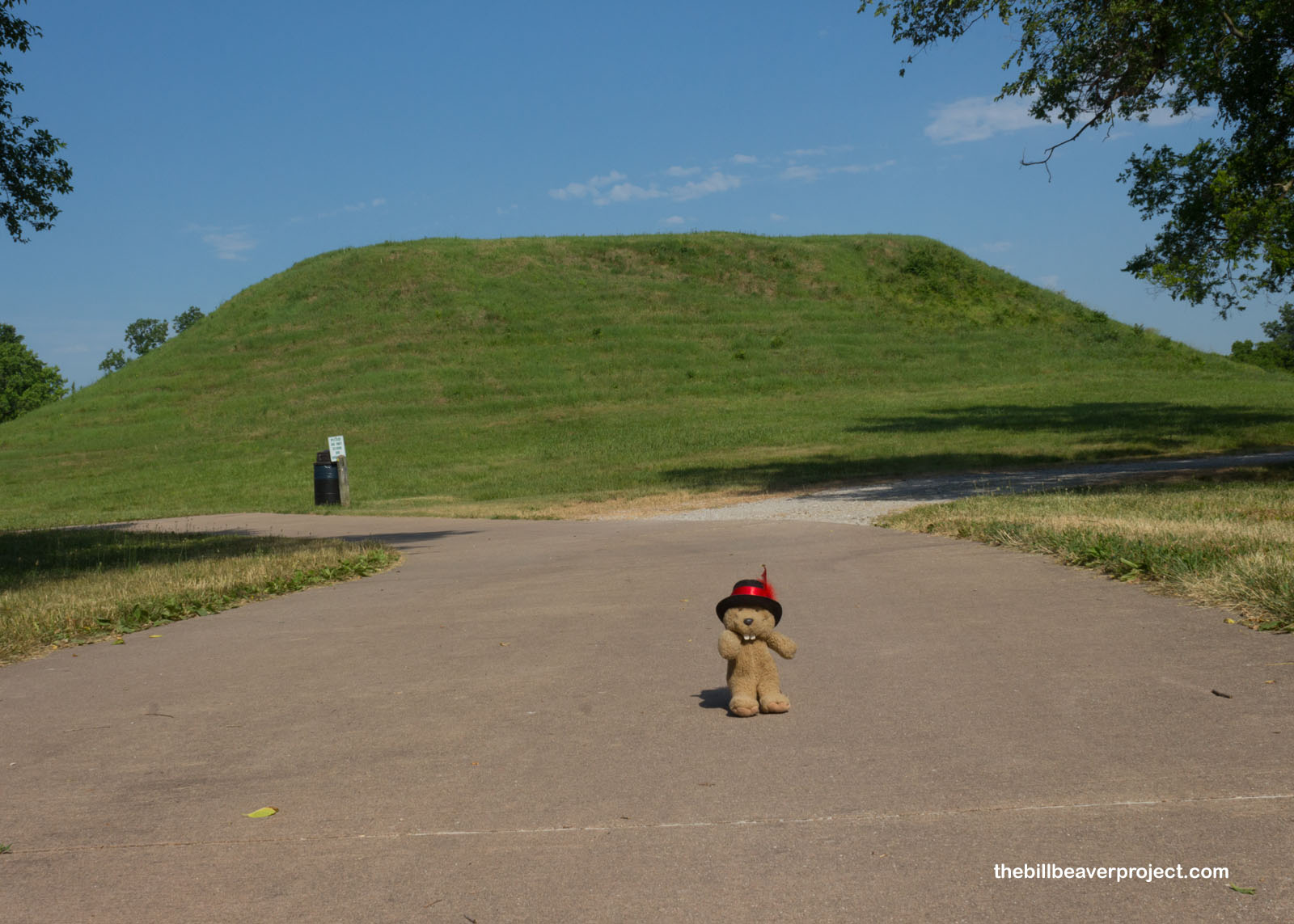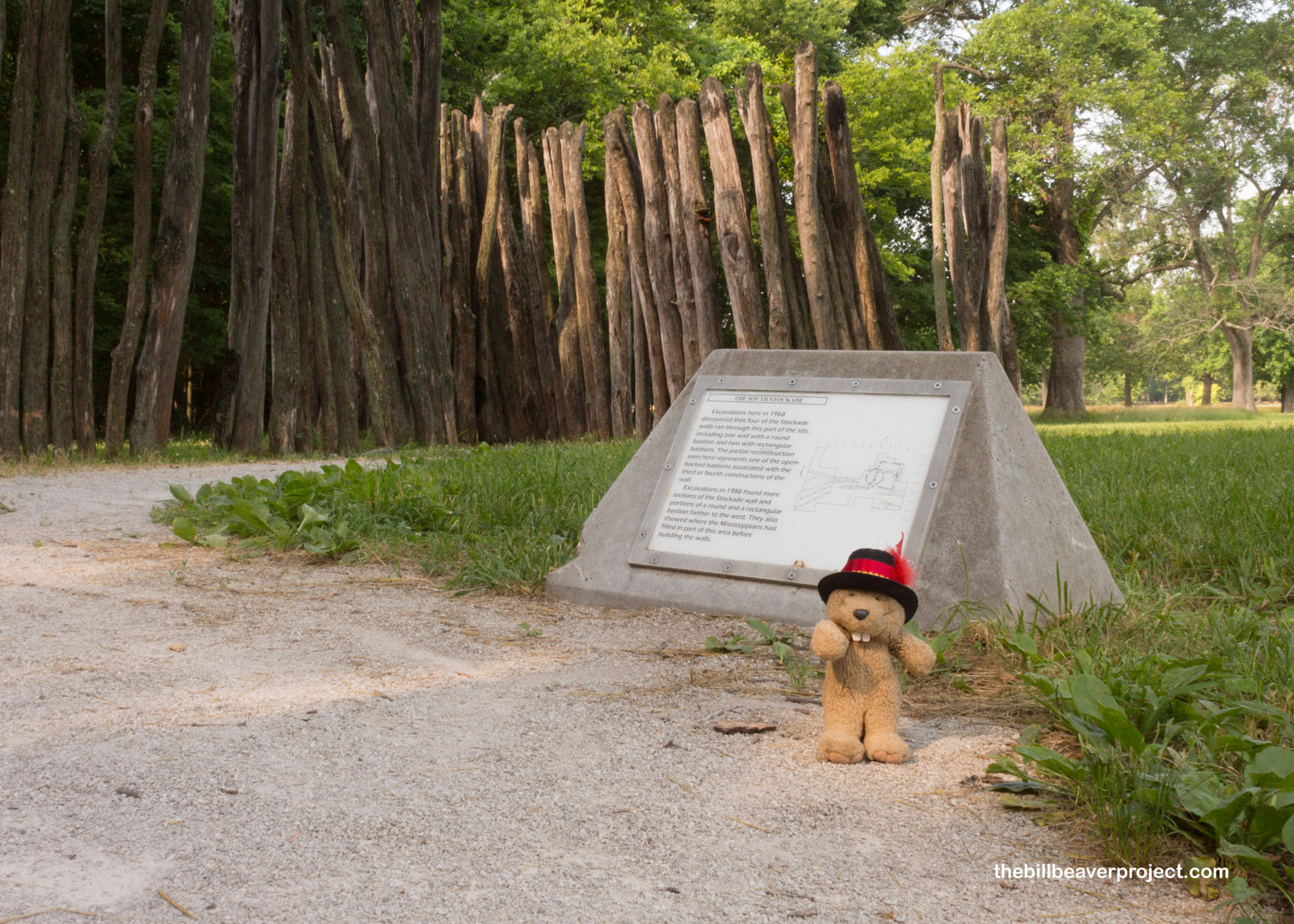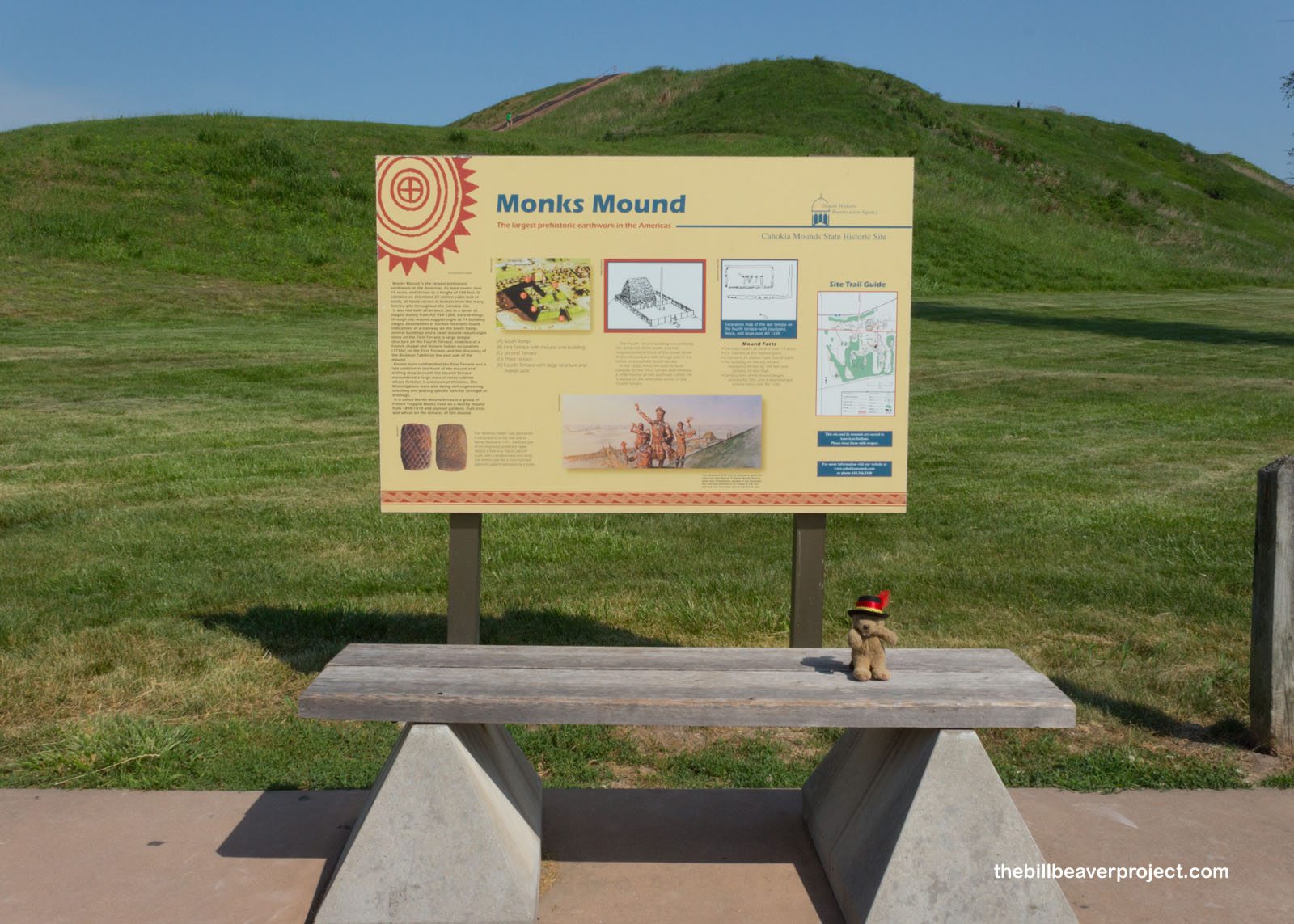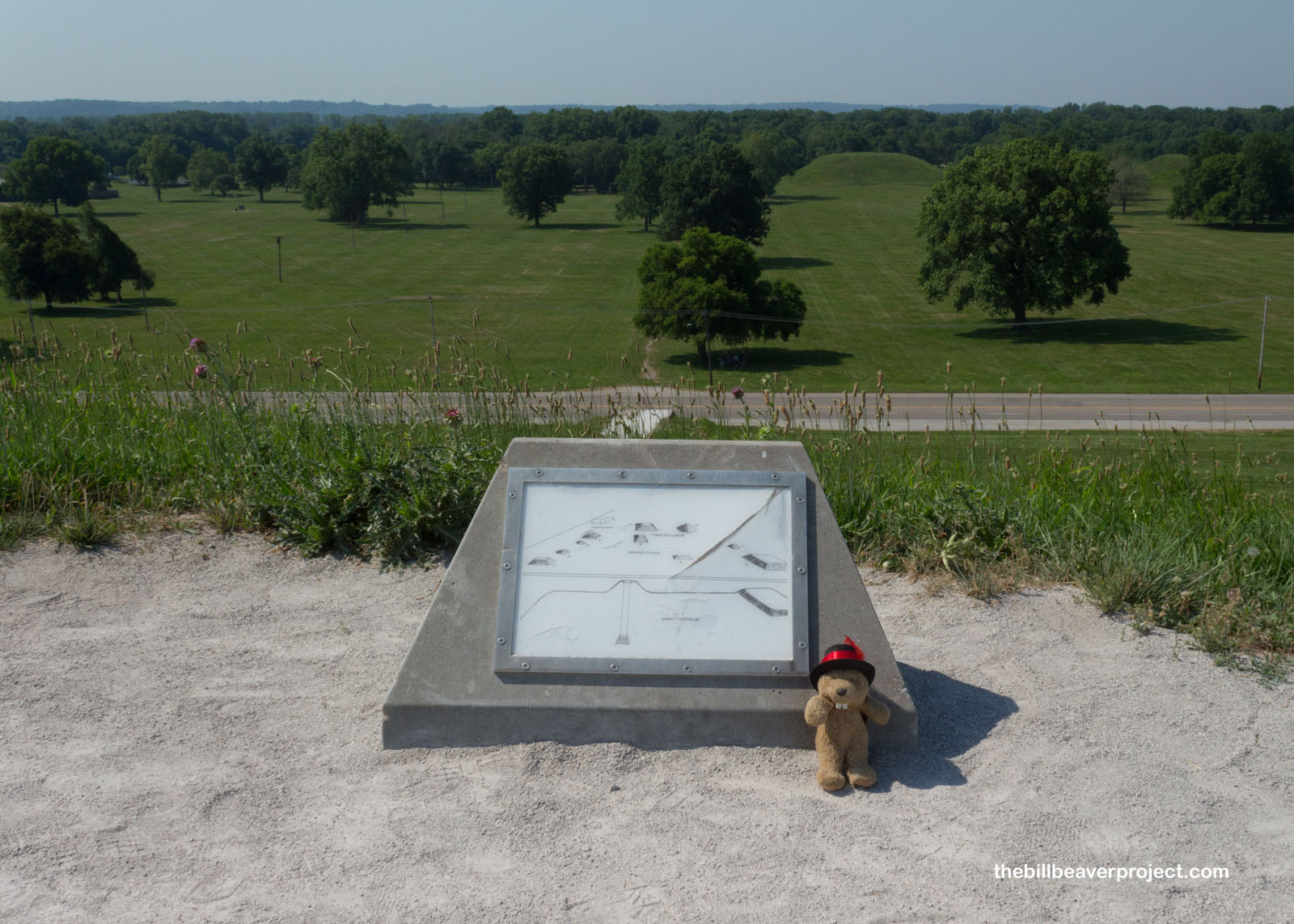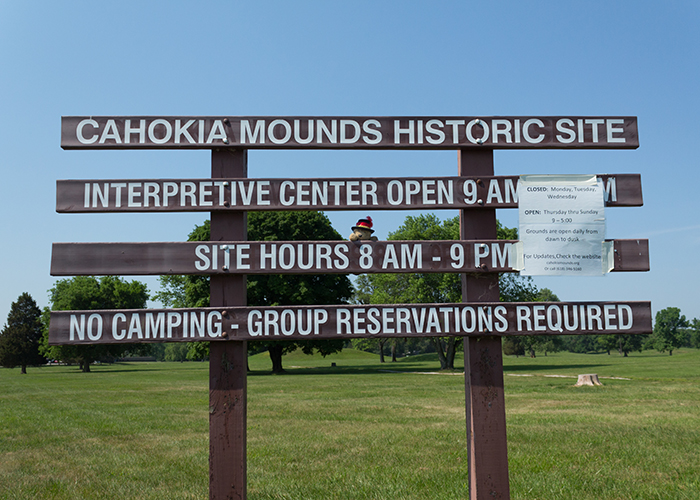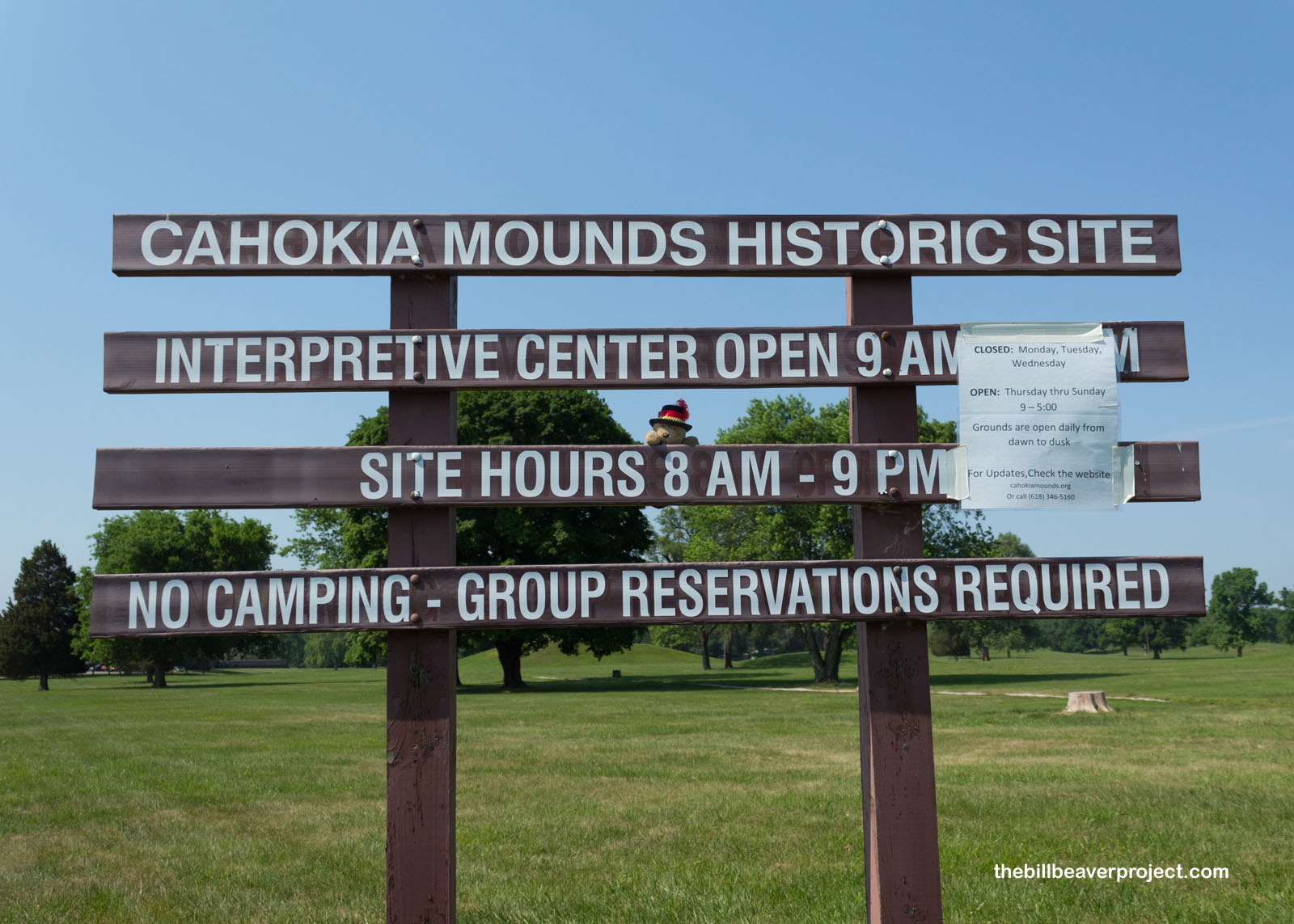
What Is Cahokia Mounds Historic Site?
At 2,200 acres in size, this enormous Mississippian mound complex was once the largest city in the world!
What Makes It Historical?
The oldest evidence of folks living in this area comes from arrowheads and spear tips dating back to 700 CE. Within a century, this Woodland culture had developed into a corn growing culture called Mississippian, which became famous for its earth mounds! This center of agriculture grew and grew, its heyday being in the 1200s with a population of 20,000 or more. Important leaders were buried here, and there’s evidence of wooden “stonehenges” built to align with the sun at different times of the year!
This city, whose name we may never truly know, was planned around the enormous Monks Mound (named for a group of Trappist monks who lived on it in the early 1800s), 15 acres in area and 100 feet in height! It was the centerpiece of over 100 other mounds, each used for different things, from housing to burials to agriculture, all of which was surrounded by a wooden palisade for defense! For about 200 years, this was a major center of commerce and rituals, but the population began to decline mysteriously in the 1300s. The Oneota lived here for about a hundred years, then the Illinois, whose sub-group, the Cahokia, gave their name to these mounds.
French Europeans, then Americans, owned this land privately from 1809 until 1866, when Thomas Ramey bought it and gave archaeologists like William McAdams, Dr. J. Francis Snyder, and Dr. R.J.R. Patrick access to the land. The latter created the first accurate map of the whole Cahokia site! From 1923 onward, 650 acres of the Cahokia complex have been protected as a state park, with excavations continuing under the Illinois State Museum and more from across the Midwest!
How Can I #HelpTheHelpers?
- Volunteer at Cahokia Mounds Historic Site!
- Donate to Cahokia Mounds Historic Site!
- Be a responsible visitor! Please respect the signs and pathways, and treat all structures and artifacts with respect. They’ve endured a lot to survive into the present. They’ll need our help to make it into the future!
How Do I Get There?
30 Ramey St
Collinsville, IL 62234
(Take Me There!)
When Should I Visit?
The grounds are open daily from dawn until dusk, while the interpretive center is open Thursday through Sunday from 9:00 AM until 5:00 PM!
More Photos
